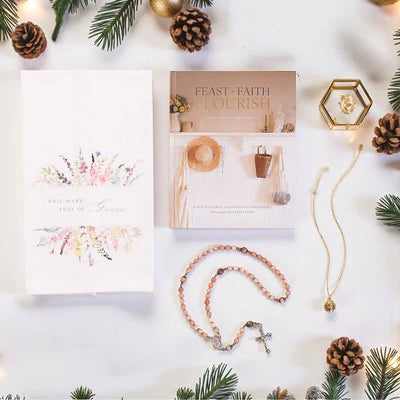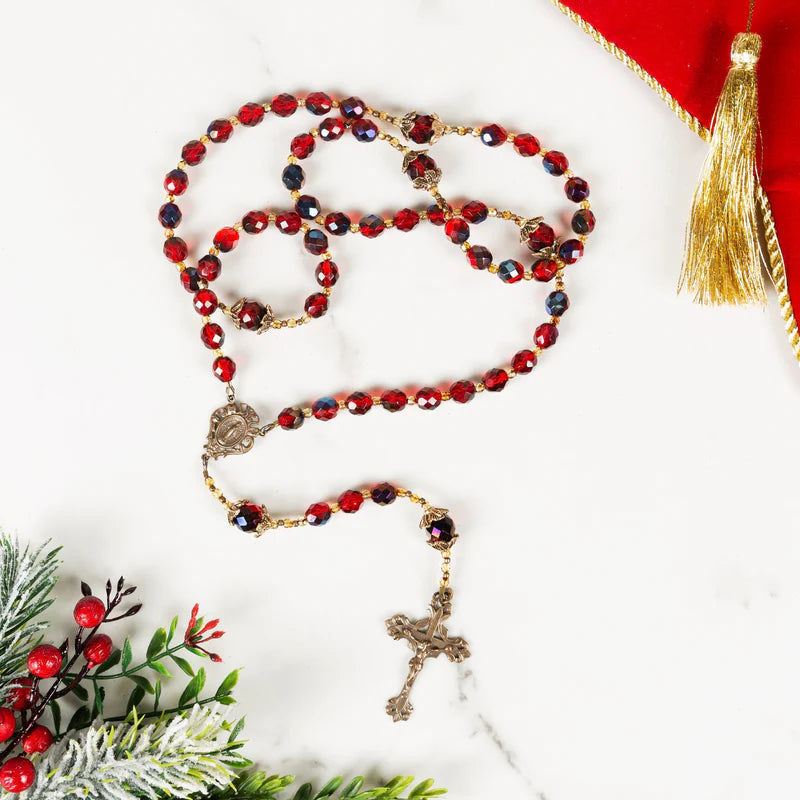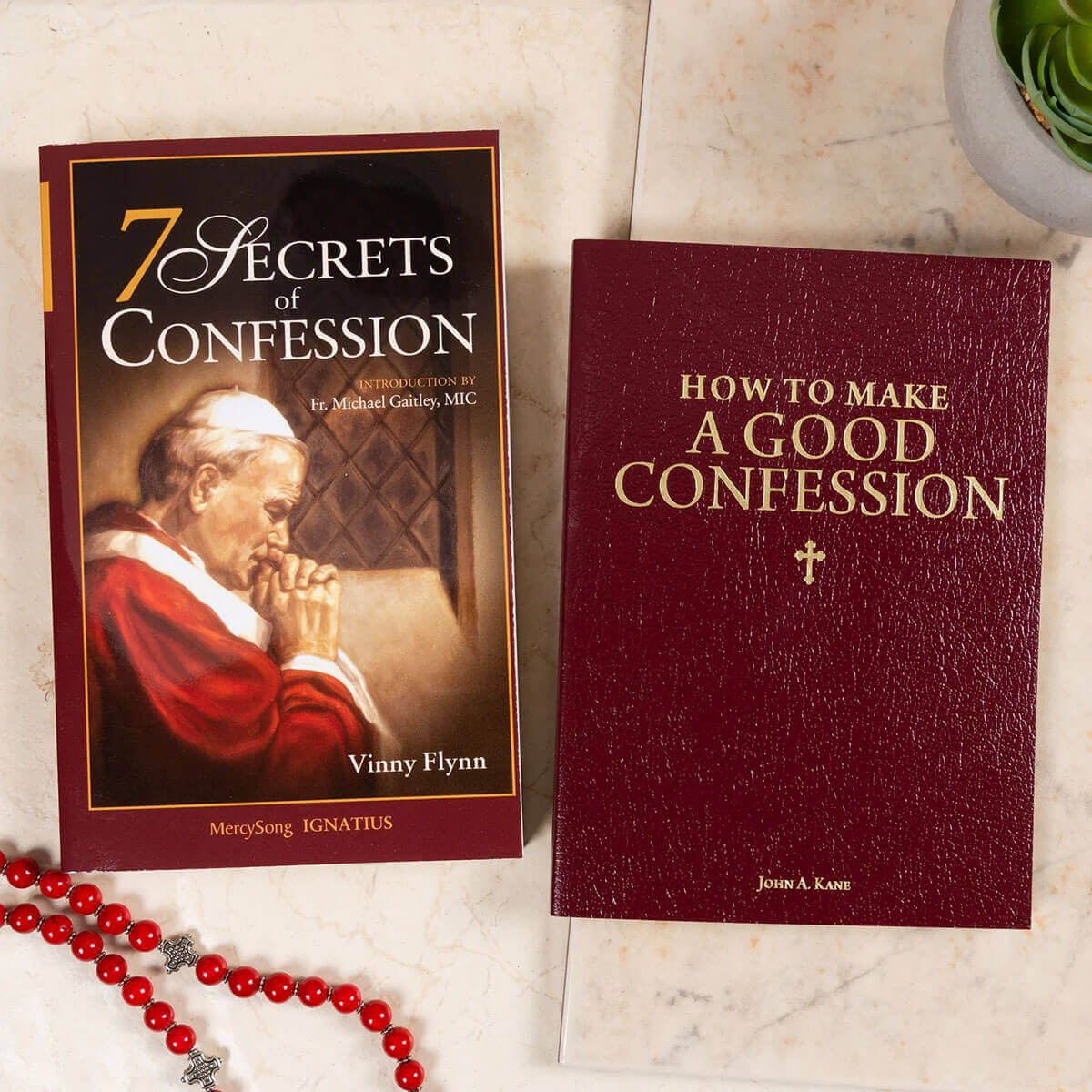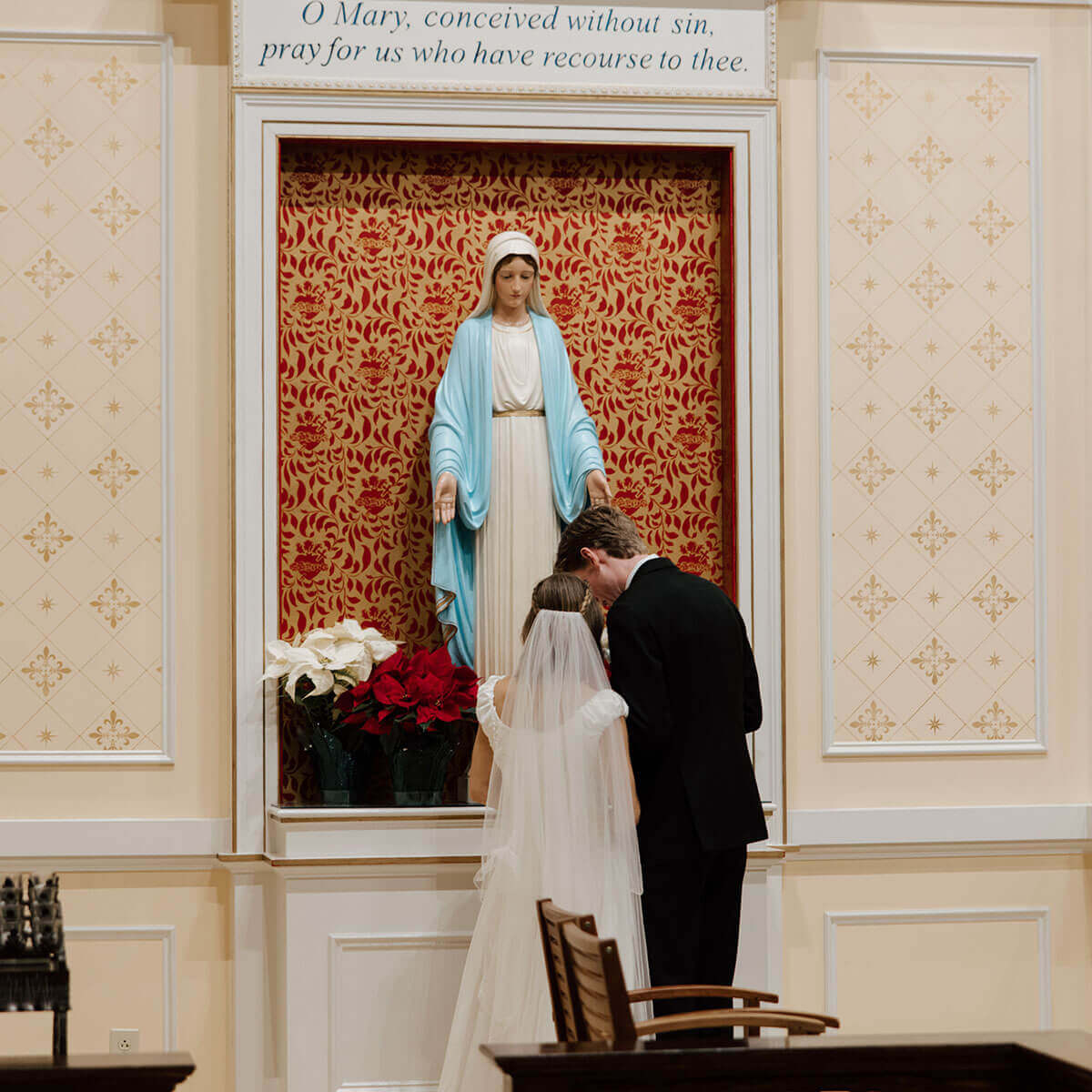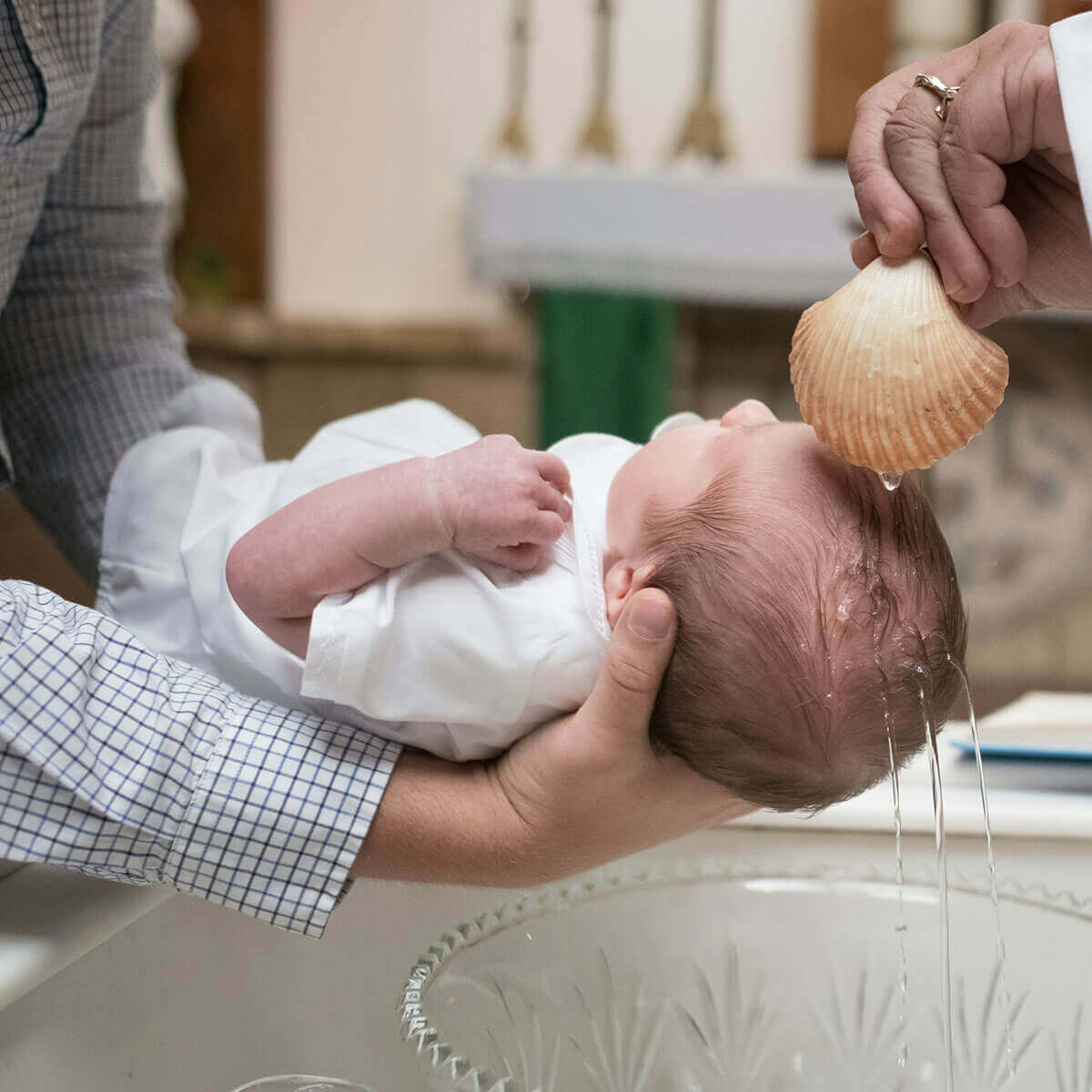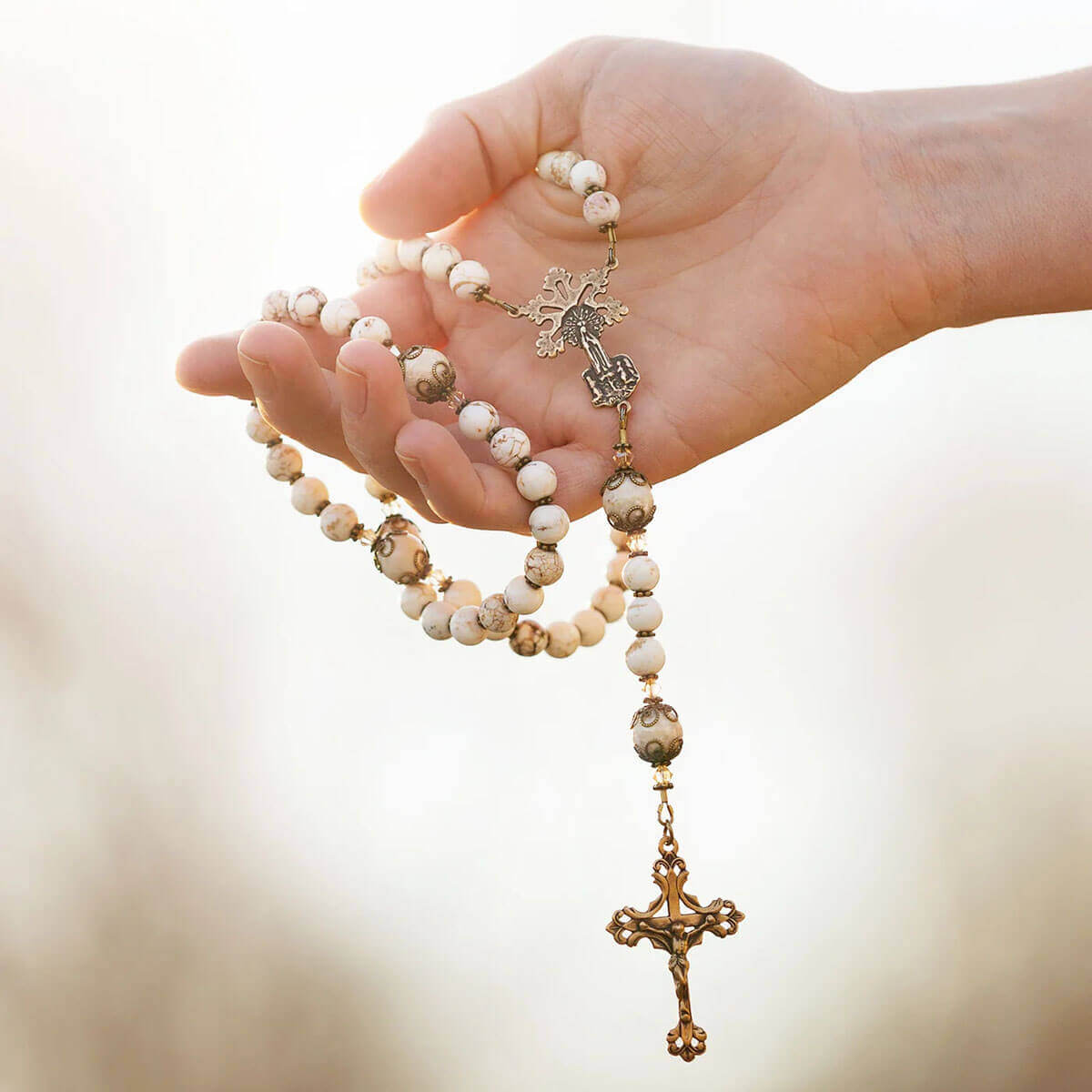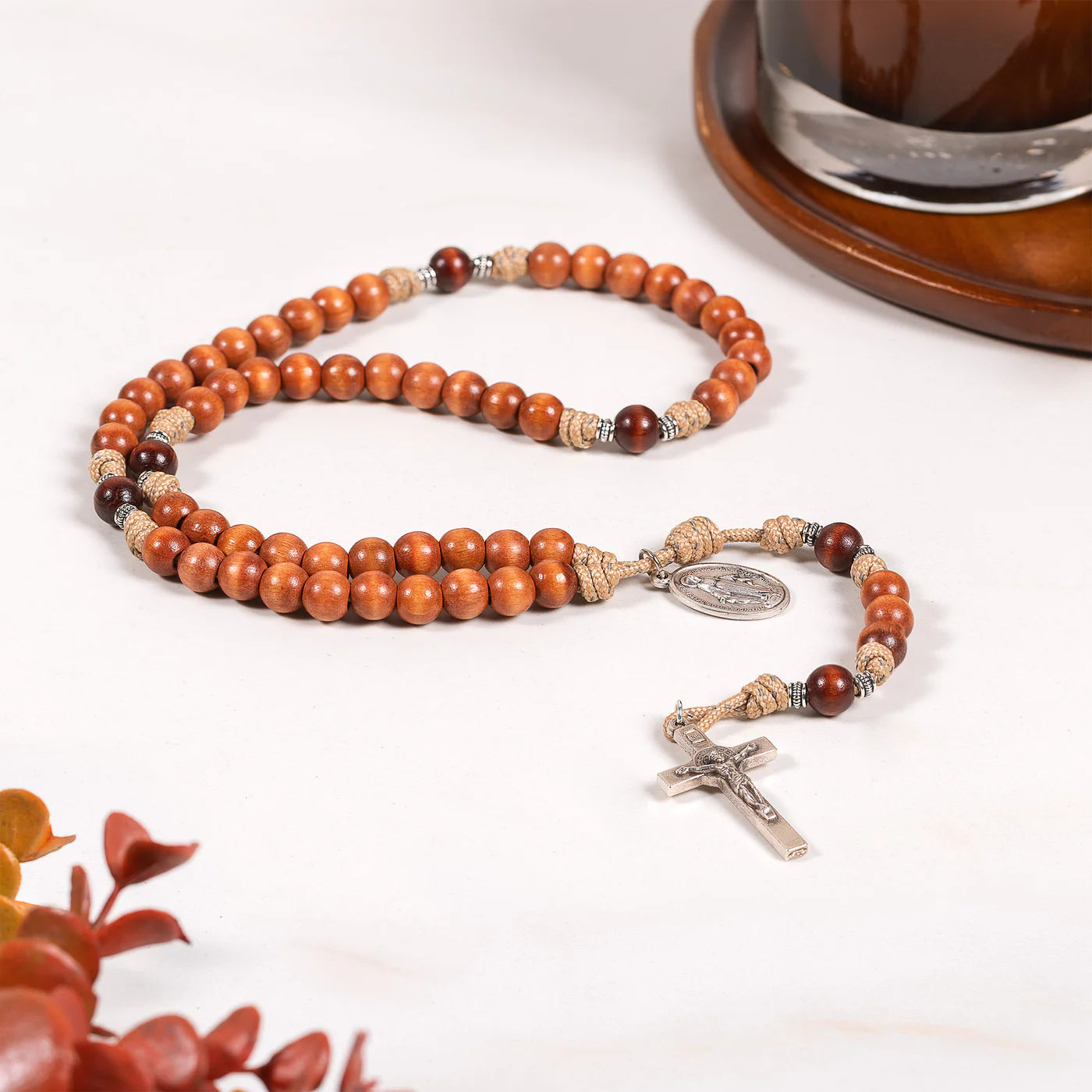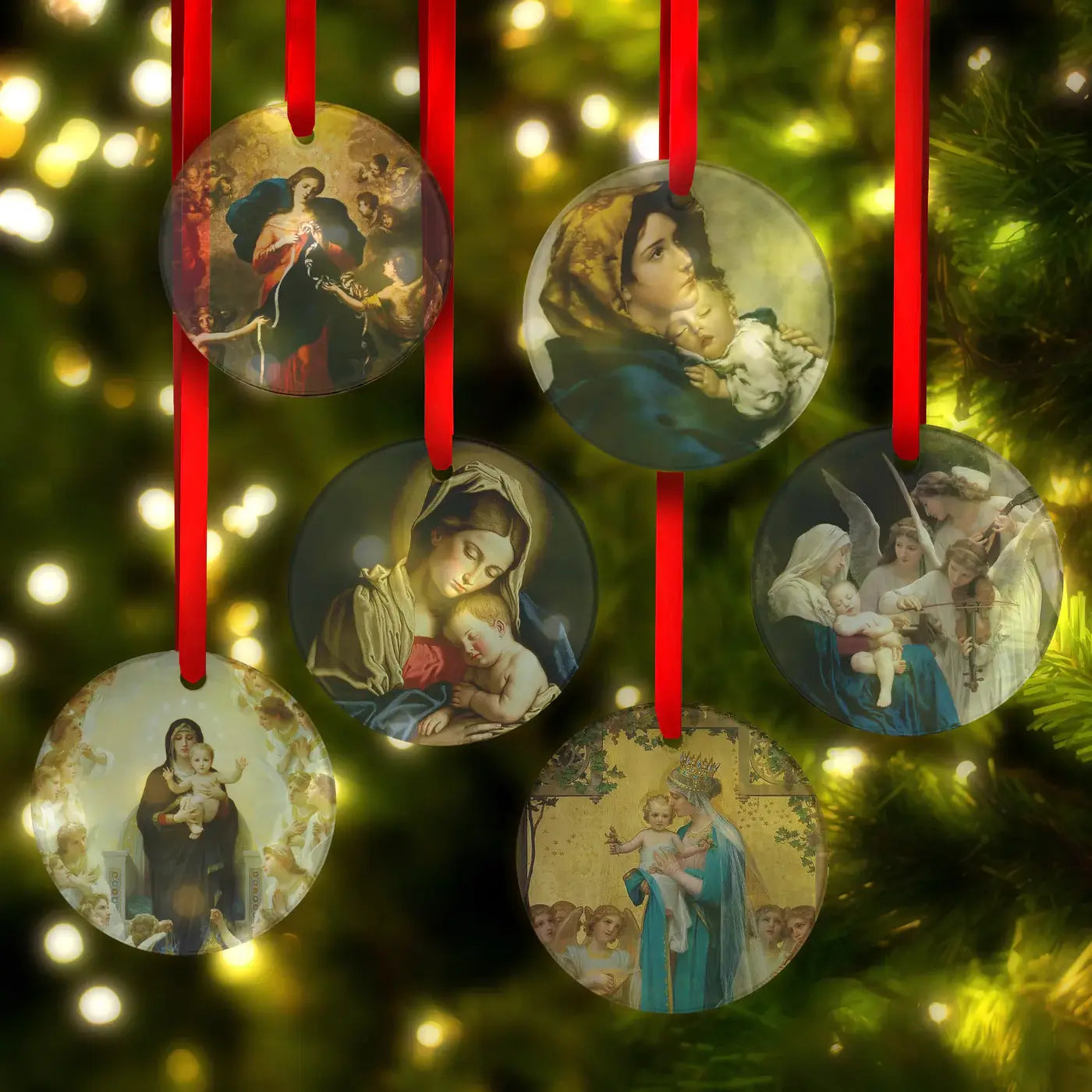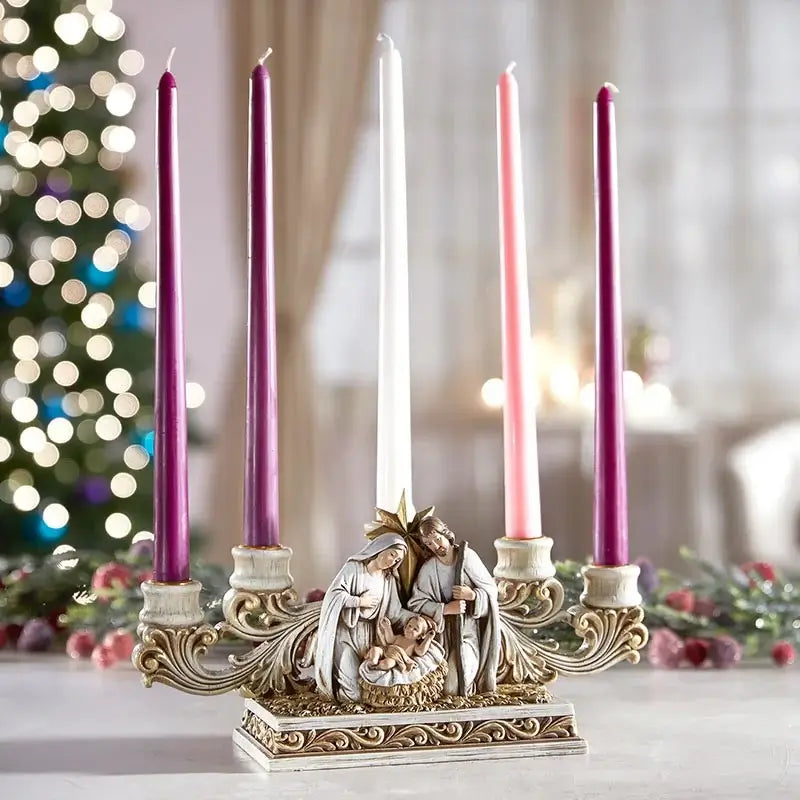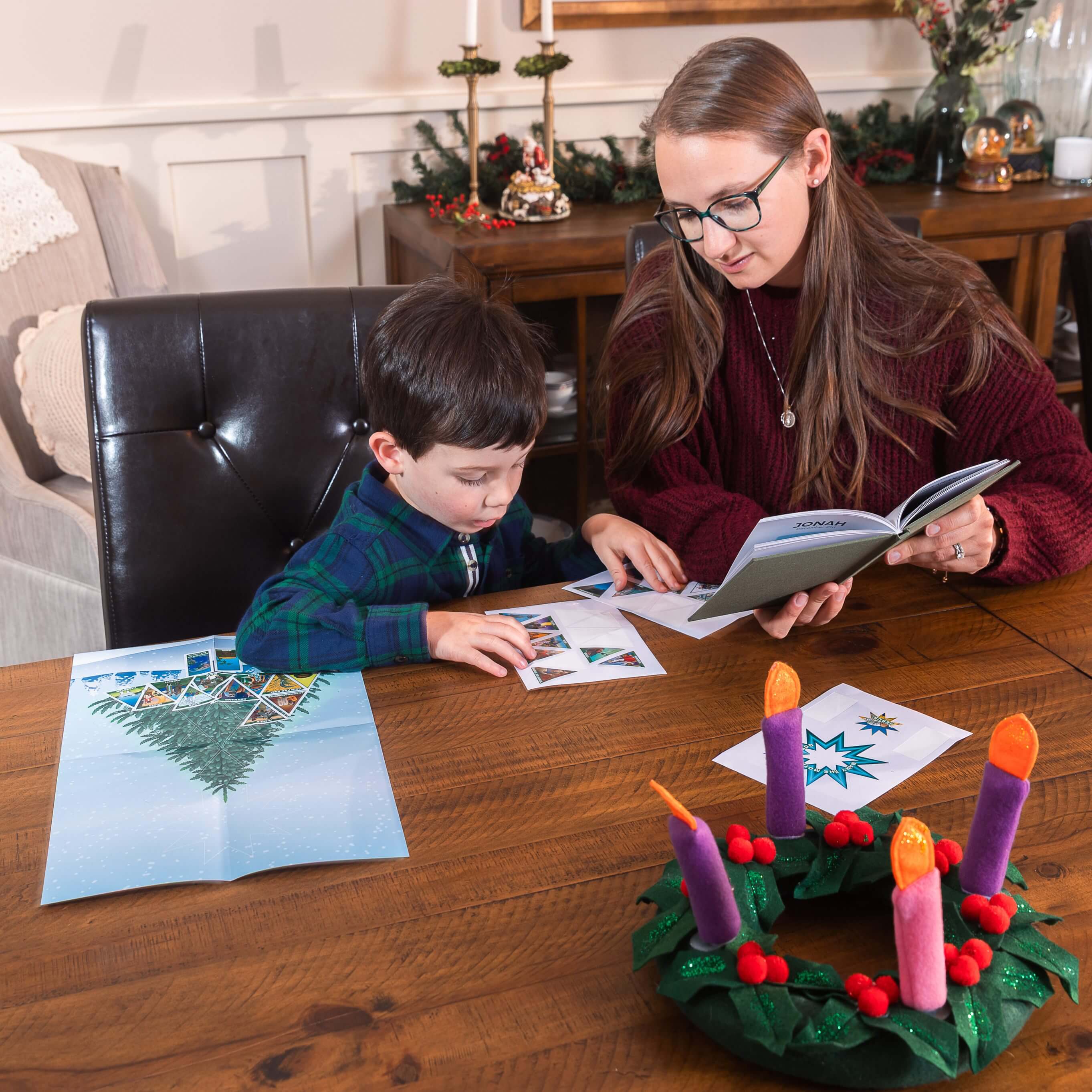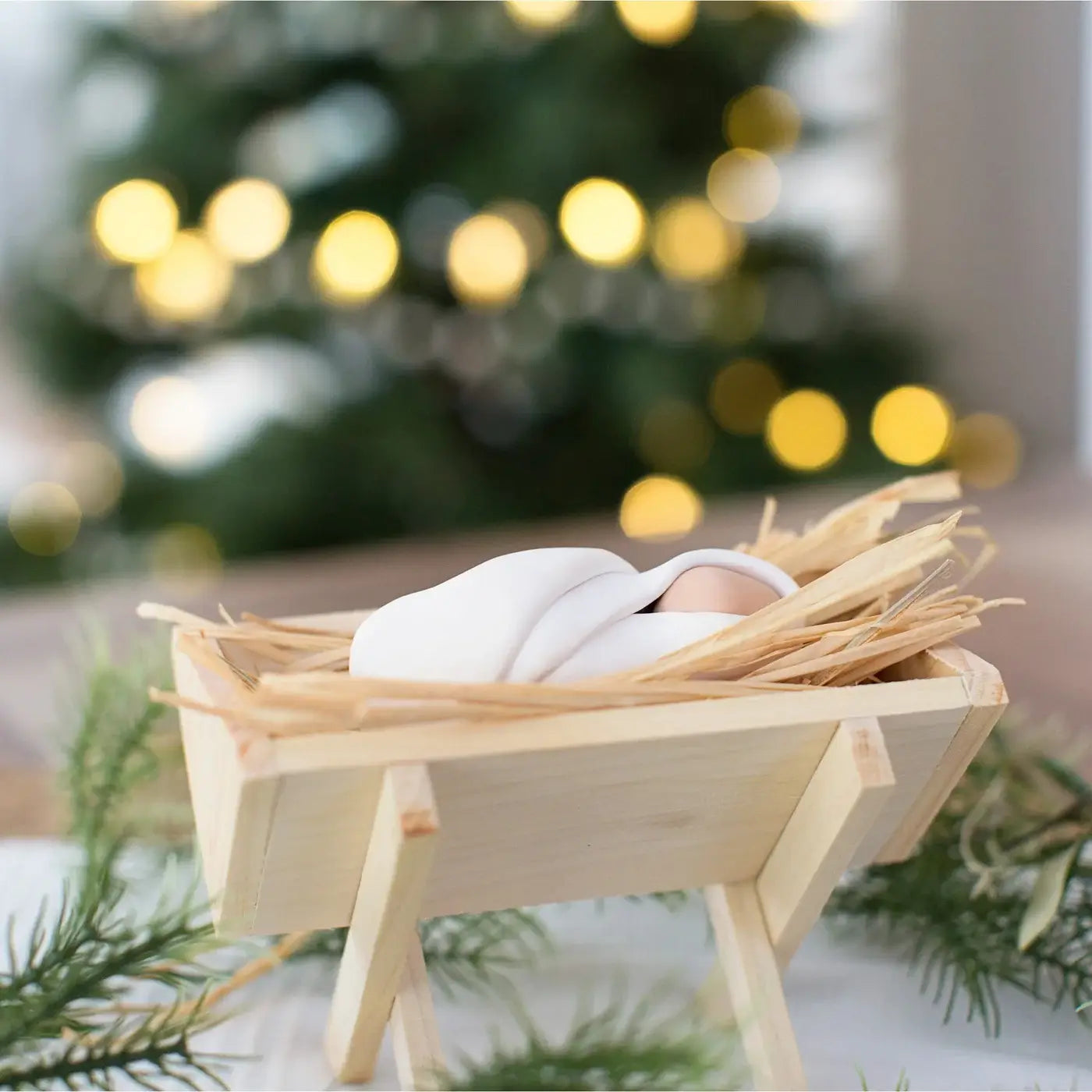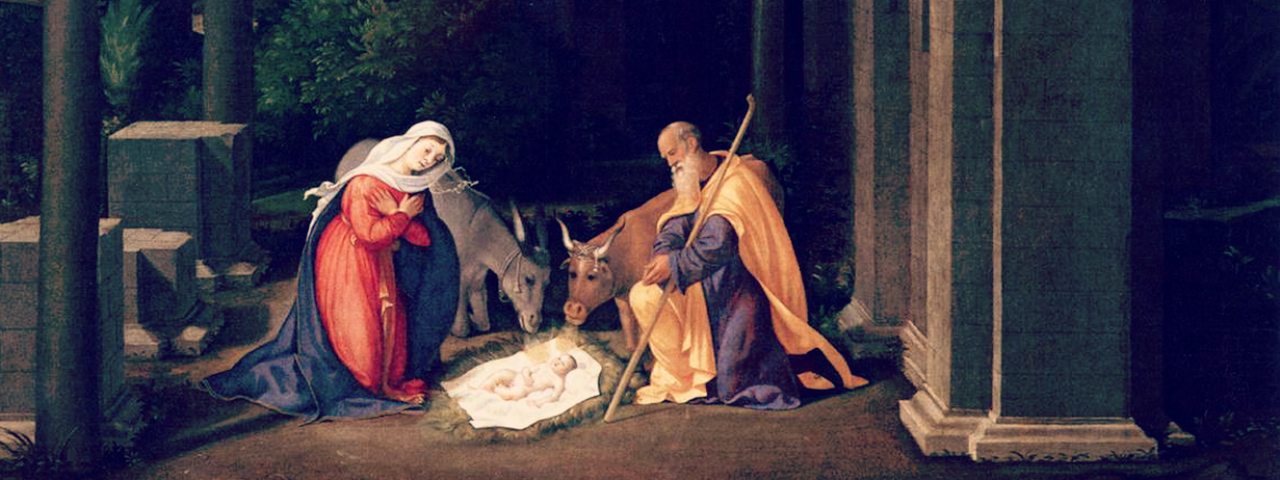Advent is a beautiful liturgical season—and within its four weeks are many wonderful saints and feasts to celebrate! Honoring these feast days can help us prepare ourselves to welcome Our Infant King on Christmas morning. Of course, so many saints to honor during this liturgical season can seem a bit overwhelming—especially if we are also attempting to have a pensive season focused on preparing our hearts for the coming Savior.
Yet the feast days can be celebrated in easy ways without much effort, such as adding a prayer at the end of the day or having a meal based on the saint. One of the beauties of celebrating Advent feast days is that each year it might look a little different for us. For instance, one year we might have a party to celebrate Our Lady of Guadalupe while another year we might have a lot more on our plate and all we can do is simply have a Mexican meal with our family to honor Our Lady. There are many ways to simply or elaborately celebrate and the following are some suggestions:

The Feast of St. Andrew (November 30)
The first saint to "kick-off" the Advent season is St. Andrew whose feast is celebrated on November 30th. Many Catholics are familiar with the the St. Andrew Christmas Novena. St. Andrew was the very first disciple called by Our Lord and is the one who convinced his brother, Simon, to become Jesus' disciple. "We have found the Messiah!" Andrew said to him (now we know Simon as Peter, the first pope). Andrew was a fisherman by trade, but upon the call of Jesus to commit his life to His teachings, Andrew at once left his fishing trade behind, and stayed with Jesus. It is believed that after Jesus' ascension, he traveled to Greece to spread the gospel. Soon thereafter St. Andrew was put to death on a cross to which he was tied. Although he suffered for two days before he died, he never stopped preaching the gospel.
There are many popular traditions associated with St. Andrew's feast day, especially in those countries that have him as their patron saint: Scotland and Russia. But the most popular St. Andrew's feast day tradition is for everyone. The is the Christmas novena that begins on St. Andrew's feast day.
[[st-andrew-christmas-novena-bracelet-w-novena-card, 878]]
The origin of the prayer is unknown but it is likely over 100 years old and comes to us from Ireland.
If the St. Andrew novena was prayed as a regular nine-day novena, it would end on the Feast of the Immaculate Conception on December 8th. However, this novena prayer is actually prayed much longer than nine days—it is prayed throughout all four weeks of Advent. It is piously believed that whoever recites the St. Andrew Christmas Novena Prayer FIFTEEN times each day from the feast of St. Andrew (November 30th) until Christmas Eve will obtain the favor requested.
Here is the prayer to St. Andrew:
Hail and blessed be the hour and moment in which the Son of God was born of the most pure Virgin Mary, at midnight, in Bethlehem, in piercing cold. In that hour, vouchsafe, O my God! to hear my prayer and grant my desires, through the merits of Our Saviour Jesus Christ, and of His Blessed Mother.

St. Nicholas (December 6)
St. Nicholas Day is on December 6th, and is an easy feast to celebrate with children. To many young heart's delights shoes, which are left out overnight, are filled with little chocolate coins or other candy and tiny treats (see this article for ideas). While there are many wonderful stories about St. Nicholas, the most popular is that he rescued a family in need of a dowry by filling the young ladies' stockings as they hung out to dry in the secret of night (the origin of the Christmas stocking). The feast of St. Nicholas is also a perfect day for baking cookies. The traditional St. Nicholas cookies called speculass come from northern European countries such as Belgium, the Netherlands, and Germany. They are made using a detailed, hand-carved wooden cookie mold in the shape of the saint. Any cookie mold can be used to create beautiful "Christmas" cookies which are decorated with royal icing made from powdered sugar, real butter and vanilla, and then dyed with food coloring. There are a variety of cookie recipes which can be used such as a refrigerator sugar cookie, peanut butter cookie, gingerbread cookie, or even store-bought cookie dough.
Another idea that enhances the Advent spirit is to share your decorated creations once the cookies are finished, with neighbors, teachers, loved ones, or friends.
Reading a story about St. Nicholas in the evening is a wonderful way to end the day with young children (or grandchildren)! And invoking this great saint of Advent by reciting this Prayer to St. Nicholas helps us remember the reason for the season!
St. Ambrose (December 7)
When St. Ambrose was an infant, legend has it that a swarm of bees surrounded his face as he lay in his crib. None of the bees stung Ambrose but a drop of honey was left on the infant's cheek as they buzzed away. Because of this incident, his father always said that his son had a good disposition and a "honeyed tongue". Later his words would become counsel for many during heated arguments about the Church in the time of the Arian heresy. St. Ambrose was first appointed governor of Milan by the emperor, and then after many heard his eloquent and consoling words, he was appointed bishop. This would have been fine if Ambrose had been a priest! He was only a catechumen at the time and was preparing for baptism. When he tried to decline the invitation, the emperor, too, expressed his desire for Ambrose to become ordained so that he might be a bishop. So within a week Ambrose was baptized a Christian, ordained a priest, and consecrated the bishop of Milan.
Many know of St. Ambrose as the one who taught, counseled, and encouraged St. Augustine. Both St. Augustine and St. Ambrose became the first doctors of the Church.
St. Ambrose is often seen with a beehive and is the patron saint of candlemakers, bee keepers, and bees. For this reason many light a candle on this feast in honor of St. Ambrose. Another tradition is to make a dish or simple dessert with honey in it such as honey cakes.
Perhaps this is one of the feasts of Advent that you may wish to honor in a simple way such as lighting a candle and saying the following Penitential Prayer of St. Ambrose of Milan:
O Lord, who hast mercy upon all, take away from me my sins,
and mercifully kindle in me the fire of thy Holy Spirit.
Take away from me the heart of stone, and give me a heart of flesh,
a heart to love and adore Thee, a heart to delight in Thee,
to follow and enjoy Thee, for Christ's sake. Amen.

The Feast of the Immaculate Conception (December 8)
The Solemnity of the Immaculate Conception of the Blessed Virgin Mary (Holy Day of Obligation) is December 8. This is one of the most important feast days on the Church calendar. Because Our Lady Immaculately Conceived is the patroness of the United States, it's also a holy day of obligation in this country which means the faithful are required to attend Mass, as on a Sunday.
Read more about Mary and her Immaculate Heart
Attending Mass as a family is a wonderful way to celebrate this feast day. Author Kendra Tierney says that after Mass she celebrates with her family by having a dinner of all white foods such as chicken alfredo, cauliflower, and white dinner rolls... with cake with white frosting for dessert.
There are additional Marian prayers that might be said on this day such as the Litany of the Blessed Virgin Mary (also known as the Litany of Loreto). The Collect from the Mass for this solemnity is also a beautiful prayer that can be recited:
O God,
who by the Immaculate Conception of the Blessed Virgin prepared a worthy dwelling for your Son, grant, we pray, that you as you preserved her from every stain by virtue of the Death of your Son, which you foresaw, so through her intercession, we, too may be cleansed and admitted to your presence.
Through our Lord Jesus Christ, your Son, who lives and reigns with you in the unity of the Holy Spirit, on God, for ever and ever.
Amen.
Mary is an essential part of Advent and we can unite with her at the beginning of the season by asking for her intercession for a good and holy Advent!
[[our-lady-of-guadalupe-ornament, immaculate-conception-framed-print]]
The Feasts of Juan Diego (December 9) and Our Lady of Guadalupe (December 12)
The Feast of St. Juan Diego and the Feast of Our Lady of Guadalupe, although they fall on separate days, are connected and can be celebrated in similar ways. To learn more about these feast days you will find the full story of Juan Diego here and Our Lady of Guadalupe here.
The story of Juan Diego and Our Lady of Guadalupe has become an important part of the religious culture of the Americas and has inspired millions of conversions to the Catholic faith. The image imprinted by Our Lady, despite being nearly five hundred years old, shows no signs of deterioration. If you have been fortunate enough to visit the shrine in Mexico City, you have seen the incredible scenes of people dressed in traditional Aztec costumes, pilgrims on their knees moving towards the basilica, colorful paper flowers, and of course the tilma.
In The Catholic All Year Compendium, author Kendra Tierney offers a wonderful idea to help celebrate the feast days:
"If you are looking for something really great to celebrate St. Juan Diego and Our Lady of Guadalupe, you can't do better than throwing a tamalada, in which different families bring different prepared elements and everyone hangs out while assembling and eating tamales. Enough tamales are made so that every family can bring some home for later."
Even if you don't throw a party, you can easily and simply celebrate these feast days by preparing a traditional Mexican meal for your family or friends or by baking Mexican wedding cookies (sometimes referred to as "snowballs") and enjoy these wonderful Catholic feasts. Or you can read or tell the story of Juan Diego and Our Lady of Guadalupe.
The Feast of Our Lady of Loreto (December 10)
The following is a paraphrased excerpt from Kendra Tierney's book The Catholic All Year Compendium: Liturgical Living For Real Life:
The Virgin Mary was from Nazareth in Galilee. She lived in the home of her parents, ...SS. Anne and Joachim. This is the house where she was born. ...It was where the Annunciation took place. After traveling to Bethlehem and giving birth to Jesus there, the Holy Family fled to Egypt. When Jesus was still young, they resettled in Nazareth. During Jesus' public ministry ..., Mary was often present with him in and around Jerusalem, but we have it from his own mouth that "foxes have holes, and birds of the air have nests, but the Son of Man has nowhere to lay his head." Mary would likely have kept her home in Nazareth.
After Jesus, from the cross, gave his mother and St. John in the care of one another, tradition holds that they lived Ephesus, and it is from there that Mary is believed to have been assumed into heaven. The house in Ephesus is believed ... to have been found on the outskirts of the town, and you can go there to visit it.
But what of Mary's house in Nazareth? That is believed to be in Loreto, Italy.
After Jesus' Ascension, the apostles converted the home in Nazareth into a chapel, which was discovered in 336 by St. Helena, mother of the Roman emperor Constantine. A basilica was built around the house, and according to records Christians worshipped there for more than a thousand years. During the Crusades Jerusalem and its surrounding area was destroyed and Our Lady's home was threatened. So four angels picked up the house and moved it from Nazareth to a hill in Loreto, Italy, in 1295. Here pilgrims can visit the home today and see the basilica which was built around the small home. worshipped there for more than a thousand years. During the Crusades Jerusalem and its surrounding area was destroyed and Our Lady's home was threatened. So four angels picked up the house and moved it from Nazareth to a hill in Loreto, Italy, in 1295. Here pilgrims can visit the home today and see the basilica which was built around the small home.
While there is no requirement for Catholics to a have a devotion to Our Lady of Loreto, or to believe in the angelic transfer of the home (some say it was dismantled and brought to Loreto by ship), it is a wonderful tale! So much of our faith is rooted in mystery and this story is one way to express that mystery during Advent.

In fact the story of Our Lady of Loreto is a perfect way to introduce the gingerbread house to your Advent tradition! Whether gingerbread houses are made from scratch or they are store bought and assembled and decorated at home, they are a wonderful treat for this season!
St. Lucy's Day (December 13)
The Feast of St. Lucy is celebrated on December 13. St. Lucy was one of seven holy women who, along with the Blessed Virgin Mary, are commemorated in the Canon of the Mass. Born to wealthy Christian parents, Lucy lost her father when she was very young. Her mother then fell ill, and fearing that there would be no one to take care of her daughter if she died, she promised Lucy's hand in marriage to a young pagan man from a noble family. St. Lucy prayed that her mother would be healed and then had a dream where St. Agatha appeared to her and told her that her mother would survive because of her great faith.
gratitude to God for healing, Lucy and her mother decided to give all their fortune to the poor and to dedicate their lives to serving Christ. Lucy also refused to marry. Upon hearing this, Lucy's fiancé became furious and denounced her to the Sicilian governor as a Christian. When the governor came to see for himself, Lucy looked at him and announced that he and Diocletian would be removed from power and dead within three years. This angered the governor so much that he had her eyeballs poked out and handed to her before her execution.
When Lucy's body was presented for burial, all of her wounds had been miraculously healed and all that she had predicted came to pass. Just a few years later, the Roman Empire was under the rule of Constantine who legalized Christianity in 313.
A favorite tradition for St. Lucy's day is to make St. Lucy's bread. This can be done in the form of a braided bread or as buns. These saffron-flavored sweet rolls (or loaf) create a lovely breakfast to be enjoyed on this feast day. Many recipes call for a raisin or two to be added to the center of each furl so that they look like eyeballs!
St. John of the Cross (December 14)
St. John of the Cross is known for his love of austerity and his devotion to the Crucifixion. One day while praying, St. John was granted a vision of Christ Crucified, in which he saw Jesus from above, as God the Father would have seen him. St. John quickly drew a sketch of what he saw, and this can still be seen today in Avila, Spain. In 1951 Salvador Dali used this sketch as his inspiration for the well-known painting Christ of St. John of the Cross.
Along with his friend and fellow mystic, St. Teresa of Avila, St. John of the Cross founded an order of priests, nuns, and religious called the Discalced (barefoot) Carmelites. Because the existing Carmelite Order had become relaxed in many ways (they were wearing shoes, even!), they first had to reform it. Unfortunately their attempts were met with resistance. Eventually St. John of the Cross was captured and kept by a group of Carmelites who opposed his reforms in a six-by-ten-foot cell and was fed only meagerly with bread, water, and scraps of salt fish. He was kept there for nine months, until he managed to escape by prying off a hinge on the door and letting himself out through a window in the adjacent room.
During his imprisonment, St. John of the Cross wrote his "Spiritual Canticle of the Soul and the Bridegroom Christ" by the light of a small hole in the wall.
In her book, The Catholic All Year, Kendra Tienery offers a few simple ways to celebrate this feast day:
"For dinner, you can't go wrong with a traditional Spanish soup. We like the Castilian sopa de ajo (garlic soup). It's a tomato and garlic soup with ham and whole poached eggs... For dessert I like to add to our Advent cookie stash by making peanut butter kisses. The brown peanut butter reminds us of the wooden cross, and the chocolate kiss on top is for the particular love St. John of the Cross had for it. (Brown and black are also the colors of the Carmelite habit)."
Saints' days give us a chance to try new and crazy - to us - foods as a family activity. Since St. John of the Cross had to survive for nine months on crusts of bread and scraps of salt fish, I like to serve a "dare you to eat it" appetizer of salt fish on crackers... The first time we tried it we were all pretty wary of those little fish. Anchovies are whole, with the heads and everything! But everyone tried some, and most of the kids really liked them."
You can discover so much more about the liturgical season of Advent (and all of the other seasons in the Catholic Church) in these Advent resources.

